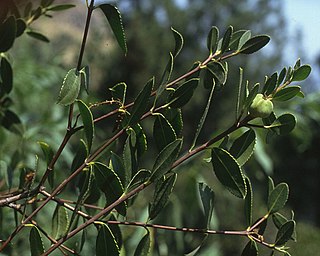| Anthostema | |
|---|---|
| Scientific classification | |
| Kingdom: | Plantae |
| Clade: | Tracheophytes |
| Clade: | Angiosperms |
| Clade: | Eudicots |
| Clade: | Rosids |
| Order: | Malpighiales |
| Family: | Euphorbiaceae |
| Tribe: | Euphorbieae |
| Subtribe: | Anthosteminae |
| Genus: | Anthostema A.Juss. |
Anthostema is a flowering plant genus in the Family Euphorbiaceae (spurge family) first described as a genus in 1824. [1] [2] It is native to Africa and Madagascar. [3] [4]
- Species [3]
- Anthostema aubryanum Baill. - W + C Africa from Ivory Coast to Cabinda
- Anthostema madagascariense Baill. - Madagascar
- Anthostema senegalense A.Juss. - W Africa from Senegal to Benin









